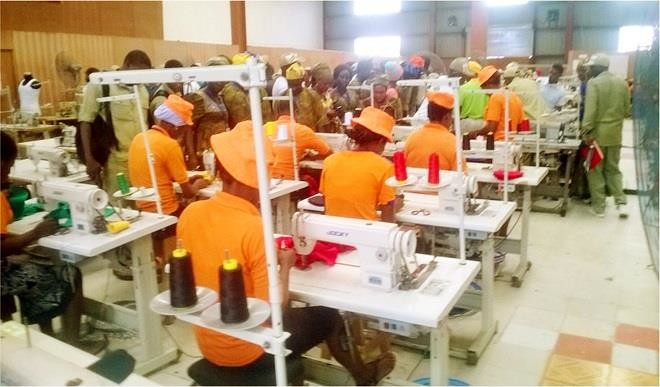RMRDC, firm move to revamp garment production
In order to revamp the country’s ailing cotton, textile and garment industry, the Raw Materials Research and Development Council (RMRDC) in collaboration with Crown Natures Nigeria Limited, has conducted entrepreneurship training on garment production for local and international (AGOA) markets for Nigerian youths. Delivering a paper at the event in Lagos on Monday, the Director […]


In order to revamp the country’s ailing cotton, textile and garment industry, the Raw Materials Research and Development Council (RMRDC) in collaboration with Crown Natures Nigeria Limited, has conducted entrepreneurship training on garment production for local and international (AGOA) markets for Nigerian youths.
Delivering a paper at the event in Lagos on Monday, the Director General (DG/CEO), RMRDC, Dr. H. D. Ibrahim, said the training workshop became imperative in order to increase job opportunities and export potentials within the sector.
“The share of the manufacturing value-added and employment generation potential of the sector decreased significantly from creating over 250,000 jobs in 1997, to less than 25,000 in 2006, a decrease of over 80% within the period. Today, employment generation in the sub-sec¬tor is at an all-time low, with less than 20,000 employees,” the DG pointed out.
He said from 2010 to 2015, Nigeria imported an estimated quantity of textiles that totaled $20 billion, adding that as a result of this, the federal government found it mandatory to put in place measures to revamp the sector.
Dr. Ibrahim regretted that in Nigeria, the textile industry which was formerly the largest employer of labour in the manufacturing sector and accounted for 25% of the Gross Domestic Product (GDP), has almost collapsed.
“The textile industry in Nigeria was also the largest in Africa, after Egypt and South Africa,” he noted.
In a keynote address, the Minister of State for Industry, Trade and Investment, Hajiya Aisha Abubakar, described the training as apt, coming at the time the government was poised to creating enabling environment for diversification of the economy.
In his presentation, titled ‘Strategies for sustainable raw materials supply for textile industries in Nigeria,’ Dr. Gabriel G. Awolehin, of the council, noted that at present, most Nigeria textile firms are export dependent and that out of 52 ginneries in the country, less than half are in operation and at low capacity utilization.
Awolehin listed high priority to food crops than cotton, poor prices and market dynamics, lack of fertiliser and frequency of spray as some of the production constraint facing the sector.
He is of the opinion that if the country’s raw materials potentials are fully exploited, the country could become a net exporter of textile raw materials, thus saving foreign exchange, increasing GDP, ensures diversification of economy among others.
Dr. Awolehin advocated for the establishment of Textile Council of Nigeria.
Speaking on Financing Options Available for Small and Medium Scale Entreprises (SMEs), Mr. Michael Oye of the Bank of Industry (BoI), said: “In year 2009, BoI set up about 100billion Naira for cotton and garment sector. Last year, another N1billion was dedicated to small scale fashion designers firms.”
In a presentation by Joseph Ogungbade of the Nigerian Export Promotion council (NEPC), he noted that AGOA (African Growth and Opportunity Act) offers a veritable window for export of duty-free products from eligible sub- Saharan Africa countries to the US.
